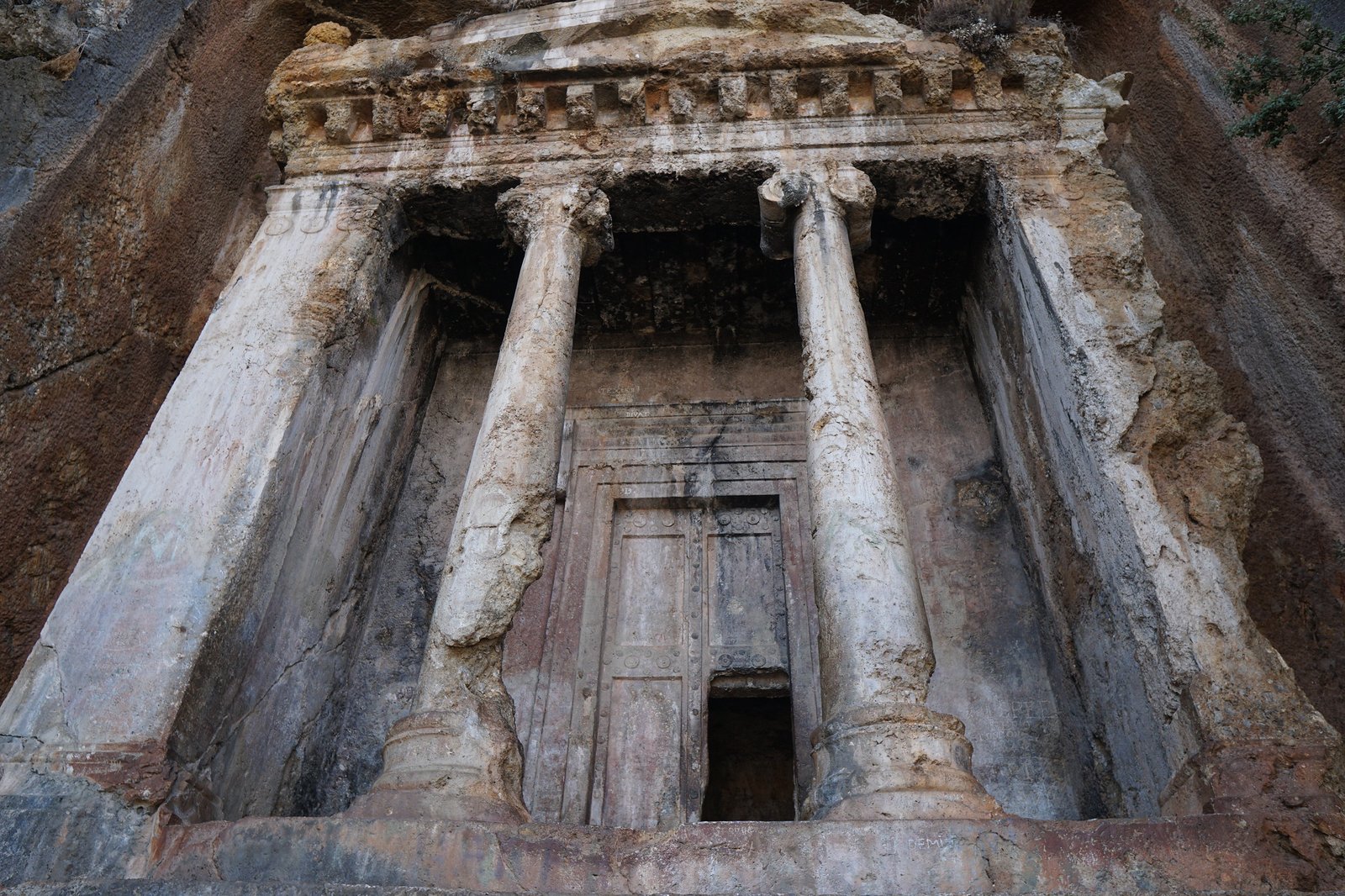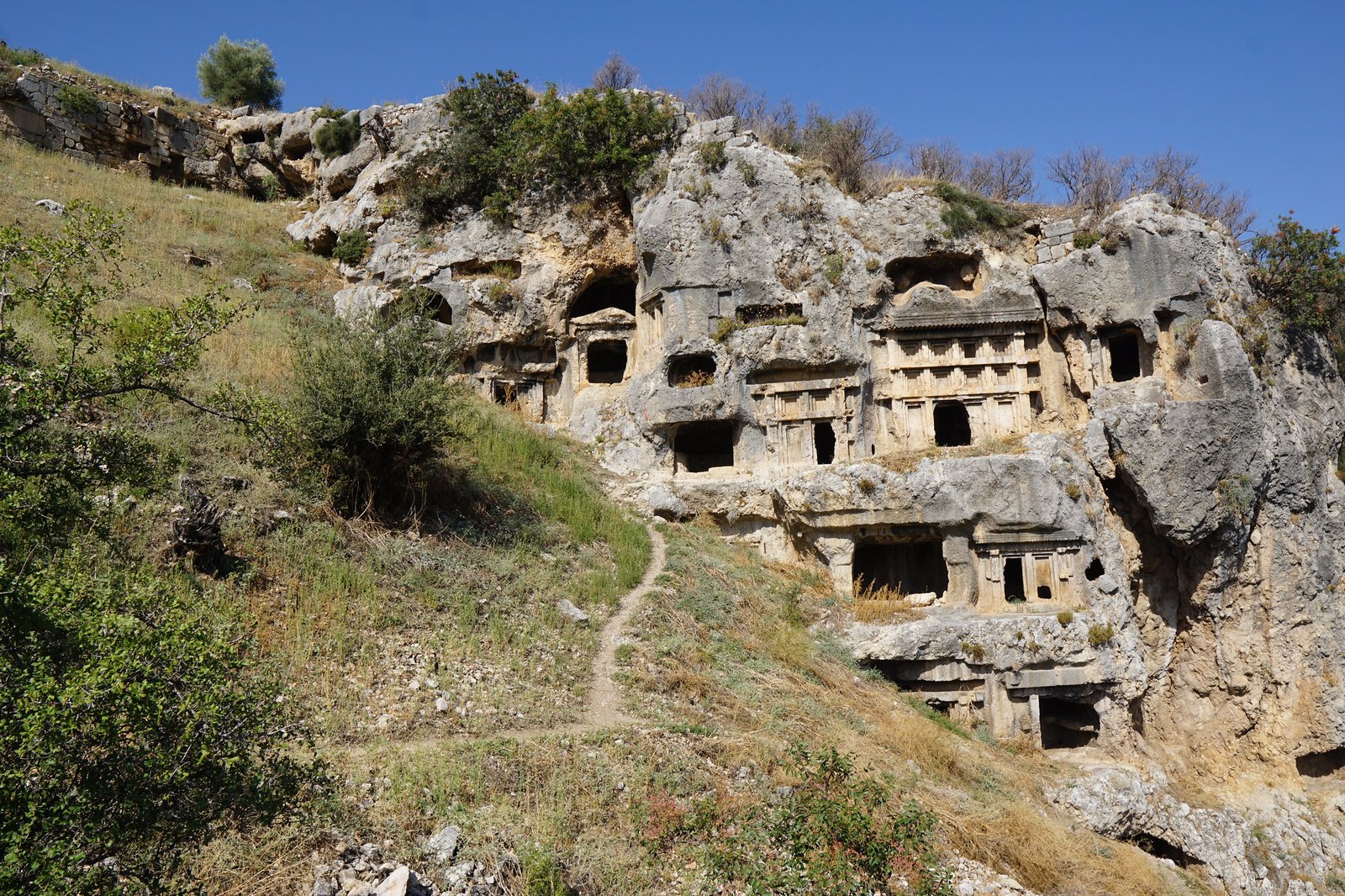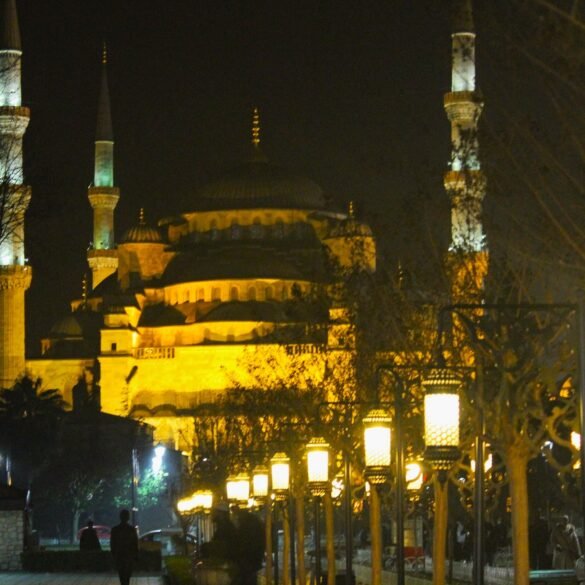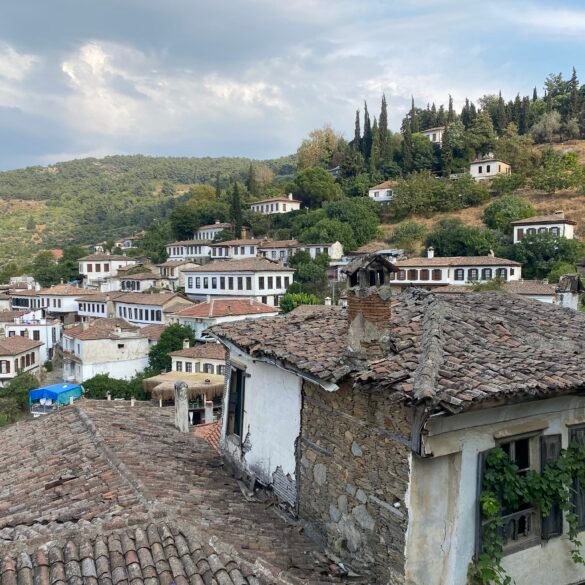We visited Lycia, and I am here to tell you all about it. If you are staring at a map, confused and bewildered, let me get you a little better situated. Lycia is a maritime district of southwestern Anatolia and can be found on the Teke Peninsula, surrounded by the Mediterranean Sea on the south, Caria on the west, and Pamphylia on the east. If you still can’t find it, then you need a different map, preferably something from the 1st or 2nd century.
So, to be completely transparent, we didn’t build a time machine and travel back millennia to visit ancient Lycian landscapes nestled among limestone cliffs and rugged mountainous terrain. We cheated by flying coach to modern-day Türkiye, renting a car, and paying modest entrance fees to the ruins of historical Lycian sites. What can I say, we were operating on a budget and with limited vacation time.
And yet, for a bit there, we felt as if we had left Türkiye and entered a completely different country, civilization, and culture. And when I say, “different country”, I specifically mean “Greece”. I initially mistook the buildings and statues on these sites to be of Greek origin, especially when faced with traditional Greek amphitheaters and columns. I quickly learned that this architecture was a blend of Lycian and Greek styles, showcasing the cultural exchange that took place in this region. Upon closer examination, it became easy to distinguish Lycian cities for their characteristic funerary architecture of distinctive rock-cut monumental tombs carved into cliffs and hillsides.
We first “entered Lycia” in the town of Fethiye, a popular coastal town in southwestern Türkiye. On the morning of our arrival, before we even enjoyed the turquoise waters of the Mediterranean Sea, or strolled narrow, winding streets of the Old Town with traditional Ottoman-style houses, or paraglided from the Babadağ Mountain overlooking the natural beauty of this region, we rushed to visit the ancient Lycian city of Telmessos.


And here was our first peek at the elaborate mountain-side tombs, carved into the natural rock formations that surround Fethiye. I was mesmerized by the intricate reliefs and inscriptions on the facades of the tombs and the panoramic views of the town and the sea. It was incredible how the modern town developed among and around these ancient ruins, with historical sites merging with contemporary streets and houses in a juxtaposition of old and new.
Our next visit, just two days later, was Tlos, one of the most significant ancient Lycian cities and archaeological sites, located in the modern-day town of Yaka. Tlos is a well-preserved acropolis with panoramic views of the surrounding landscape, ruins of a theater, and a central marketplace. And just in case we were still confused why Lycia was sometimes called the Land of Tombs, there was an entire necropolis with lots of impressive rock-cut tombs, chamber tombs, and even Lycian house tombs, which, as their name suggests, resemble the facades of houses.
If this is starting to sound like “Tombstone Tourism: Part II”, it’s not me, it’s the Lycians and their obsession with funerary architecture.
Later that same day, we stopped by Xanthos, a UNESCO World Heritage site. Xanthos, now called Kınık, is home to a wealth of archaeological ruins, including the remains of ancient city walls, defensive structures, and public buildings. We wandered through the fields and hills where, what used to be fortified and what is now mostly crumbled, the center of the city was located. There were more rock-cut tombs, pillar tombs, and even pillar-mounted sarcophagi for those with extravagant taste and money. Even a seemingly innocuous obelisk, inscribed on all sides with various languages, turned out to be a funerary marker. I am still not sure if Lycians were obsessed with death, much like Egyptians, or if their funerary architecture was the only thing that survived the centuries largely intact.


I forgot to mention that while we enjoyed all the modern luxuries that come with visiting ancient settlements in the 21st century, we were still not spared the main inconvenience of Lycia – the weather. And the weather was brutal. By early afternoon, the September sun became an unrelenting, blistering force, scorching the air and the ground with searing heat. All the Lycian sights, in the meantime, were located on exposed mountainsides, fields, and hills with hardly any shade to be found. The crumbled ruins of cities, with the roofs long gone, were beautiful to stroll through, yet very impractical for hiding from the oppressive heat. We made the best of it, spreading our visiting hours between early in the morning and early in the evening, to avoid the worst of the weather.
The last Lycian sight we visited just happened to be on the hottest day of them all, with the temperature soaring into the upper 90s. As we drove up to what was once a large and important city of Myra, and is currently a quaint, sleepy town of Demre, a man ran out into the road and motioned us to park in a small parking lot next to a juice stand.
“Free! Free!” he yelled, “And when you come back, you buy some juice!”
Pomegranate and orange trees surrounded the parking lot, so it seemed he had his business all figured out. We parked in the shade and walked over to the entrance. The first thing we saw, and the most striking feature of this archeological site, were marble blocks with theater masks carved into them, each displaying different features and expressions. Unsurprisingly, nearby was an ancient theater of Myra, partially restored, yet retaining its full grandeur. We lingered by the rock tombs, marveling at the inscriptions and carved pictures on the mountain face.


But the most unexpected thing about Myra was one man who used to live there. Even though he was born long after Lycia became a Roman Province, he had a direct influence on the remnants of Lycian heritage in Myra. But that is not why everyone knows his name today! St. Nicholas of Myra, also known as Nicholas of Bari, also known as Nicholas the Wonderworker, who is currently known throughout the world as Santa Claus, used to be a Bishop of Myra in the 4th century.
Standing there, sweating in the late afternoon inferno, the air heavy and arid around us, it was impossible to imagine that this is where Santa Claus actually comes from. It was also disconcerting to learn that he had destroyed many of the city's beautiful temples, including a great temple dedicated to the goddess Artemis Eleuthera, the ancient mother goddess of Anatolia, in an effort to eliminate paganism in the population. I can see why the version of St. Nick who lives on the North Pole and brings gifts became popular instead of the historically correct figure.
We walked back and happily bought some cold, delicious, freshly pressed orange juice from our parking attendant/juice seller to alleviate the heat and take our minds off ancient injustices. Unfortunately, our itinerary didn’t allow us to visit Dalyan, the most popular Lycian site, but having spent multiple days exploring tombs, carvings, theaters, and ruins of Lycia, we were satisfied with our time-traveling visit.
We also did see plenty of Türkiye while… visiting Türkiye and will tell you all about it in the next posts!

